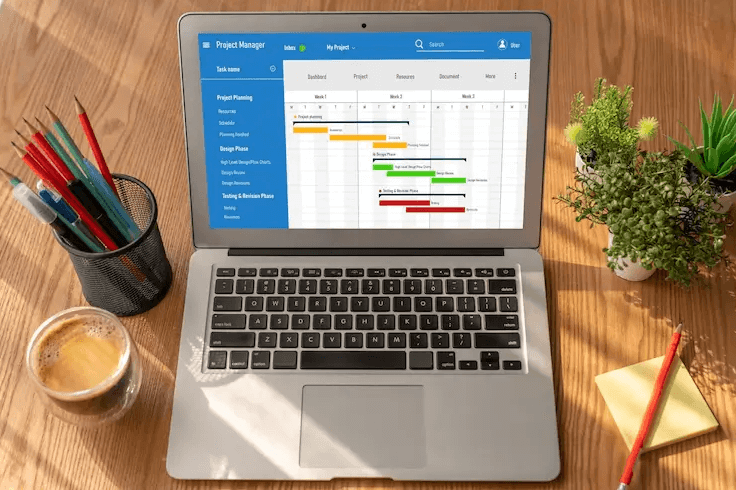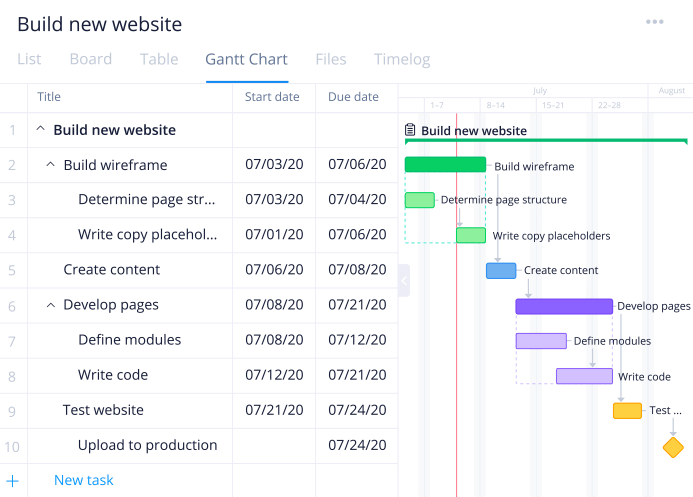A Guide to Work Packages: Definition, Examples, and Best Practices

If you look at a project plan, you will notice that it is broken down into a series of work packages that are assigned to different people in your team. Work packages are important because they streamline the project schedule, minimize confusion, and decrease the chance of errors from having to continuously draw up new plans or purchase new software. One package may be designed for customer service while another handles payroll processing.
In this article, we are going to take a look at work packages and how to use them in your project planning.
What are Work Packages in Projects?
In project management, a work package defines the smallest possible portion of a project that has been broken down into its constituent parts, and released to the team. It typically describes where a particular part will be in relation to other parts of the project.
Work package are the ‘smallest indivisible unit of work’ on a project plan. Just like a building must be constructed one brick at a time, every piece of work on your project must be done in steps. It is helpful to break down the major tasks into smaller units of work that can be distributed among individuals and teams.

Work Package Examples
Building a house
Let’s say you are managing a house construction project. Your domain knowledge of how to build a house is limited, but you still want to oversee the project. To ensure that the project goes smoothly and ends up looking exactly like the plans without any extra costs or delays, you decide to break your project down into smaller units of work, as follows below:
- Architect – You hire an architect who knows how to draw up plans for houses. He also knows what will be required to comply with local building codes.
- Preliminary drawings – This package describes the layout of your home. It will include measurements, plans and elevations of where each room, hallway and other important features will be located. The architect will then get in touch with you to make sure the plans reflect your needs and that they are legal. He may also have to get approval from a planning board or city department before going any further.
- The contractor – In consultation with the architect, he will break out each of the preliminary plans into smaller pieces of work. The contractor will be given a budget to purchase materials and begin construction. This person will be responsible for assembling them as per your specifications, signing off on changes and related paperwork.
- You – you as the homeowner will sign off on all final plans for your home in order to turn it over to the contractor.
- Purchasing – The architect will get quotes from various suppliers, so you can purchase the materials necessary to complete your home.
- Building materials supplier – The building materials supplier will deliver all of the wood, bricks, nails and other materials to your home.
Software development project
You have a software project that you are putting together. If you break out your project into its constituent parts, it may look something like this:
- Finance – The project is given a budget. The project manager then distributes the budget to each of the work packages.
- Programming – there are many different programming languages, so you will have several programmers working on the various packages. Each programmer will be in charge of a particular ‘module’ such as a security package or search engine package. They will also be responsible for making sure that the modules all fit together once they are completed.
- Database – the database package is broken out into smaller pieces of work. The programmer in charge of this will then have to set up the databases, programs and all other software. There are many different databases that may be used so he must make sure that they all fit together to create an integrated project.
- User Interface – there are several variations of user interface, so the team may have people working on different elements of this package. For example, they may have a user interface specialist who will make sure that the different parts of the program fit together. They may also have engineers working on the software to add new features or fix bugs.
- Quality control – Quality control packages are usually someone who tests the product. They try to break it and find any programming problems or system flaws. It is their responsibility to make sure that everything works as it should, before it is sold to customers.
How to Break Down Projects into Work Packages
When identifying project work packages, there are a few things that you should keep in mind.
Firstly, it is important to always think of the ‘big picture’ and ensure that the work packages you have identified are necessary. If they are not, you will end up with a project that requires more resources than it should.
Secondly, make sure you spend an adequate amount of time researching before assigning anyone to a specific package. In your haste to get started on your project, you may assign someone the wrong package. This could cause the entire project to be delayed or require rework.
Thirdly, use a charting system that is easy to understand and follow. Whenever possible, it should be easy for everyone on your team to understand how each work package relates to each other and where they fit within the big picture.
Lastly, always have work packages that are temporary and that are likely to get terminated at some point in time; otherwise you’ll end up with a project that never gets completed.
Work Breakdown Structure
If you want to delve a little deeper into the concept of work packages in project management, here are a few words about the work breakdown structure or WBS.
The WBS is a project planning technique that is designed to organize a project’s work into manageable, time-related units or packages of work. In summary, the WBS is made up of a set of hierarchically organized lists, steps and tasks. Each one of these lists is called a package and defines elements that are required for the project to be completed.
Learn more about WBS and best practices.
In a work breakdown structure, there are usually three separate layers:
- Work packages – Those parts of the WBS that have been allocated to a particular activity. These are usually the steps required to reach an objective, such as those activities that someone must perform to complete a particular part of the project such
as installing hardware. - Sub-projects – Those work packages that are parts of larger objectives. A sub-project is a component or element of a larger objective that requires a certain level of effort and cost, such as the development of a new software application.
- Resources – Those people and components (e.g., technology) used to complete the sub-projects.
Example: The WBS for writing a book consists of the following: Writing an outline; researching; identifying and writing appropriate content; drafting, etc.
The WBS is created to ensure there is no overlap, overlap occurs when people are required to do more than one assignment at the same time.
Gantt Chart
While the WBS explains you what tasks and activities to do, the Gantt chart shows when you have to do them.
A Gantt chart is a type of diagram that shows the duration between one activity and another. It is a project scheduling tool used to organize the synchronizing of work packages into time blocks, or periods. The Gantt chart tells you how much time different tasks will take to complete and how much time the whole project will require to complete.
The Gantt chart is a very visual way to represent the relationship between activities and their durations, which is important for working on a project. The main purpose of the Gantt chart is to show when one activity is finished and when the next starts. The Gantt chart shows you how much work is allocated to each work package, which is useful for making proposals and for estimating delivery dates.
Notion for Project WBS Planning
Notion is a powerful and versatile tool that can help you create and manage work packages for your projects. Here are some steps and tips on how to use work packages in Notion:
- Create a new page for your project and give it a descriptive name. You can use one of the templates from the Work category https://www.notion.so/templates/category/work or start from scratch.
- Add a table or a board view to your project page and name it “Work Packages.” This will be where you list and organize your project’s work packages. You can customize the properties and filters of the table or board to suit your needs.
- For each work package, create a new row or card and fill in the relevant information, such as name, description, status, priority, assignee, due date, etc. Add tags, comments, attachments, and other features to enrich your work package.
- To create a work breakdown structure (WBS) for your work package, you can turn it into a sub-page and add more tables or boards to break down the work package into smaller tasks or sub-tasks. You can also link to other pages or databases in Notion to create cross-references and dependencies.
- To create a Gantt chart for your work package, you can use a third-party tool and integrate it with Notion using the Embed block. This will allow you to visualize the timeline and progress of your work package and its sub-tasks.
- To monitor and control your work package, you can use the various views and filters in Notion to track the status, priority, and completion of your work package and its sub-tasks. You can also use formulas, rollups, and charts to calculate and display metrics and indicators for your work package, such as budget, scope, quality, and risk.
Conclusion
Work packages are an important part of a project management methodology – Waterfall and Scrum, for example. They help you identify certain tasks and break them down into smaller, more manageable pieces of work. The work breakdown structure is then translated into a Gantt chart, which shows how much time it will take to complete the project. By breaking down the project into manageable work packages, you will be able to see where your project stands in terms of completion.











